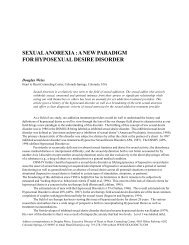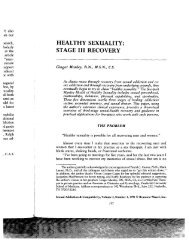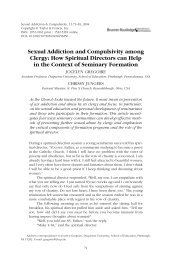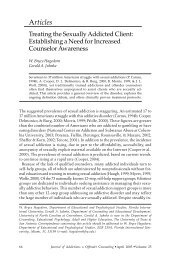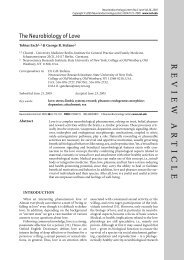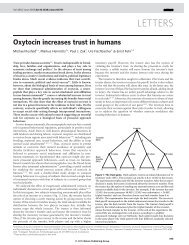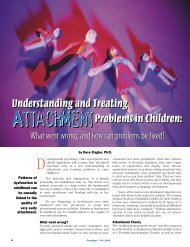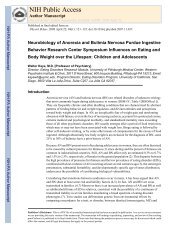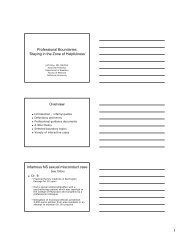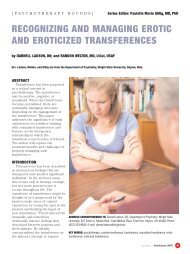Coverage and Liability Issues in Sexual Misconduct Claims
Coverage and Liability Issues in Sexual Misconduct Claims
Coverage and Liability Issues in Sexual Misconduct Claims
- No tags were found...
You also want an ePaper? Increase the reach of your titles
YUMPU automatically turns print PDFs into web optimized ePapers that Google loves.
COLORADO<strong>Coverage</strong> Trigger & Number ofOccurrencesIntentional Acts ExclusionsPerpetrator:Non-perpetrator:<strong>Sexual</strong> <strong>Misconduct</strong> ExclusionsStatute of LimitationsNot addressed <strong>in</strong> sexual misconduct sett<strong>in</strong>g.An <strong>in</strong>tent to <strong>in</strong>jure may be <strong>in</strong>ferred as a matter of law for claimsalleg<strong>in</strong>g <strong>in</strong>tentional conduct <strong>and</strong> negligence where an adult perpetratorengaged <strong>in</strong> sexual activities with a child. See Allstate Ins. Co. v.Troelstrup, 789 P.2d 415 (Colo. 1990); Colorado Farm Bureau Mut.Ins. Co. v. Snowbarger, 934 P.2d 909 (Colo. Ct. App. 1997). Intentto harm has also been <strong>in</strong>ferred where the perpetrator was a m<strong>in</strong>or.Swentkowski by <strong>and</strong> through Reed v. Dawson, 881 P.2d 437 (Colo. Ct.App. 1994).For case brought aga<strong>in</strong>st <strong>in</strong>sured <strong>and</strong> his m<strong>in</strong>or son aris<strong>in</strong>g out of theson’s sexual assault on another m<strong>in</strong>or, the negligence claims aga<strong>in</strong>stthe parent were not covered s<strong>in</strong>ce the <strong>in</strong>tentional acts exclusionprecluded coverage when “any <strong>in</strong>sured” <strong>in</strong>tended or expected harm.Swentkowski by <strong>and</strong> through Reed v. Dawson, 881 P.2d 437 (Colo. Ct.App. 1994).The Colorado courts have upheld sexual misconduct exclusions <strong>and</strong>found that they do not violate public policy. Bohrer v. Church MutualIns. Co., 965 P.2d 1258 (Colo. 1998); Church v. Mut. Ins. Co. v. Kle<strong>in</strong>,940 P.2d 1001 (Colo. Ct. App. 1996); Physicians Nat’l Risk RetentionGroup, Inc. v. Price, 968 F.2d 1224 (10th Cir. 1992).The limitations period for tort actions is two years. Colo. Rev. Stat.§13-80-102.Actions based on a sexual assault or a sexual offense aga<strong>in</strong>st achild shall be commenced either six years after a disability has beenremoved for a person under disability or six years after a cause ofaction accrues, whichever occurs later. Id. at §13-80-103.7. Theterm “person under a disability” <strong>in</strong>cludes victims of sexual assaultwhere there is a special relationship or where the victim resides <strong>in</strong> an<strong>in</strong>stitution. Id. at §13-80-1037. (3.5) (a). If a claimant br<strong>in</strong>gs a civilaction 15 years or more after atta<strong>in</strong><strong>in</strong>g the age of 18, the claimantmay only recover damages for medical <strong>and</strong> counsel<strong>in</strong>g treatment <strong>and</strong>expenses plus costs <strong>and</strong> fees. Id. at §13-80-103.7(3.5)(c).A cause of action shall accrue when both the <strong>in</strong>jury <strong>and</strong> its causeare known or should have been known by the exercise of reasonablediligence. Id. at § 13-80-108. See also Colburn v. Kopit, 59 P.3d 295(Colo. Ct. App. 2002) (Cause of action for breach of fiduciary duty ornegligence accrues on date claimant had knowledge of facts whichwould put a reasonable person on notice of the nature <strong>and</strong> extent ofan <strong>in</strong>jury <strong>and</strong> that the <strong>in</strong>jury was caused by the wrongful conduct ofanother); Ayon v. Gourley, 185 F.3d 873 (10th Cir. 1999); Sailsbery v.Parks, 983 P.2d 137 (Colo. Ct. App. 1999); Cassidy v. Smith, 817 P.2d555 (Colo. Ct. App. 1991). The six-year limitations period does notapply to claims aga<strong>in</strong>st parties other than the perpetrator. S<strong>and</strong>oval v.Archdiocese of Denver, 8 P.3d 598 (Colo. Ct. App. 2000).<strong>Claims</strong> for fraudulent concealment are <strong>in</strong>sufficient if claimants knew orshould have known the basis of their claims. P.R. v. Zavaras, 2002 W.L. 31424805 (10th Cir. 2002).– 8 –



